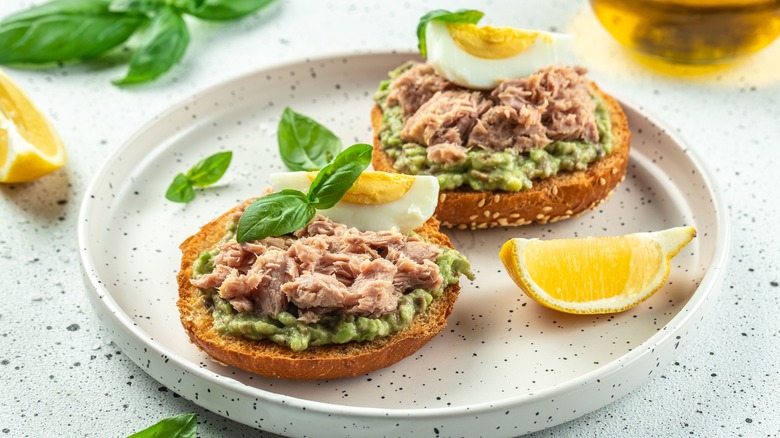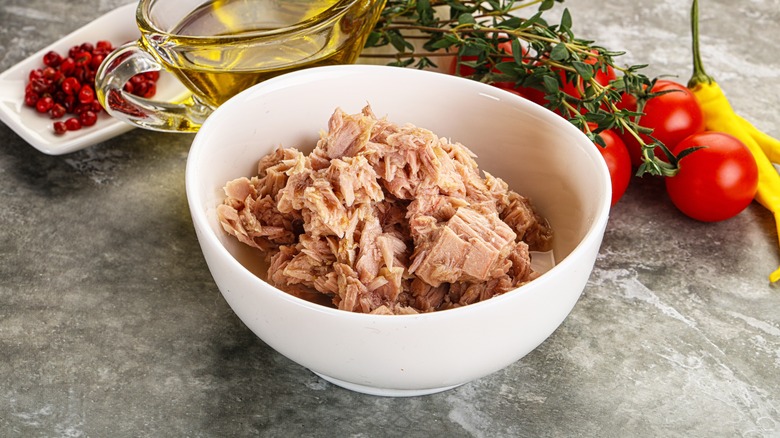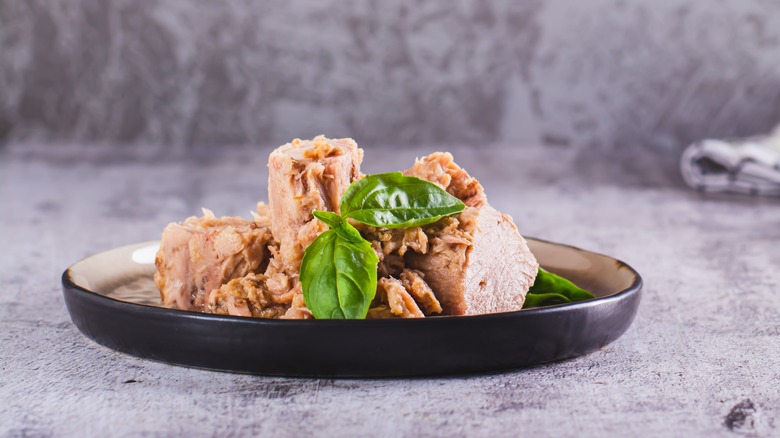The Eco-Friendly Labels To Look For When Buying Canned Tuna
If you like fish, you should always keep some canned tuna in the house. It's affordable, a great source of protein and has a slew of other nutritional benefits. This fish can be added to a leafy green salad or turned into a tasty tuna salad with a little mayonnaise and a few seasonings. However, if you want your food to be as eco-friendly as possible, there are a few terms to look for when buying canned tuna at the grocery store — specifically, there is a wide range of labels that will tell you whether the fish was caught with a net, a purse seine, or individually with a fishing line (that last option is the best).
The tuna industry is massive in the United States because the average American eats so much of it. As a country, the U.S. consumes roughly 1 billion pounds of canned or packaged tuna each year. This means fishing for tuna has to keep up with its demand, which can create a negative environmental impact due to hasty ways of catching so much fish at once.
Pole-and-line and troll-caught are key terms
It's worth inspecting your tuna labels closely to understand whether or not the fish inside was sustainably caught. Pole-and-line-caught is probably the best term to look for because this means each fish was caught individually as opposed to in a net. Large nets lead to something called bycatch, which occurs when other sea animals, like sharks or sea turtles, end up in the net because it's so large. The sharks and turtles often die as a result, so pole-and-line-caught means you're purchasing tuna that likely didn't kill any other sea animals.
Troll-caught tuna is another similarly good term. This process involves using multiple fishing lines with bait attached, which is specifically meant to attract albacore tuna. The lines are attached to a boat or vessel that goes along the water, and the tuna quickly swim to the bait. Since this technique targets tuna, it's another catching method that limits the bycatch.
Avoid tuna that was caught in nets
Although the canned tuna label won't explicitly say whether or not a net was used, there are terms that will help you better understand if they were likely used. FADs, known as fish aggregating devices, are used to attract tuna to a net. The tuna then swim into the net, but these FADs and nets attract and catch additional fish, sharks, turtles, and other marine life as well. So, when shopping for tuna, look for an FAD-free label since this means a net wasn't used.
Free-school and school-caught tuna are two other terms you might find on a canned tuna label. This means no FAD was used, and the tuna were not intentionally attracted to any location but rather were caught naturally as they traveled in a school. While this method is better than FAD-caught tuna, it does involve a purse seine, which is a bag-like net that surrounds the school of fish, meaning it can still lead to bycatch. Overall, next time you're craving some canned tuna, know that pole-and-line and troll-caught are the most sustainable tuna types to buy, but FAD-free, free-school, and school-caught are all still better than net-caught tuna.


